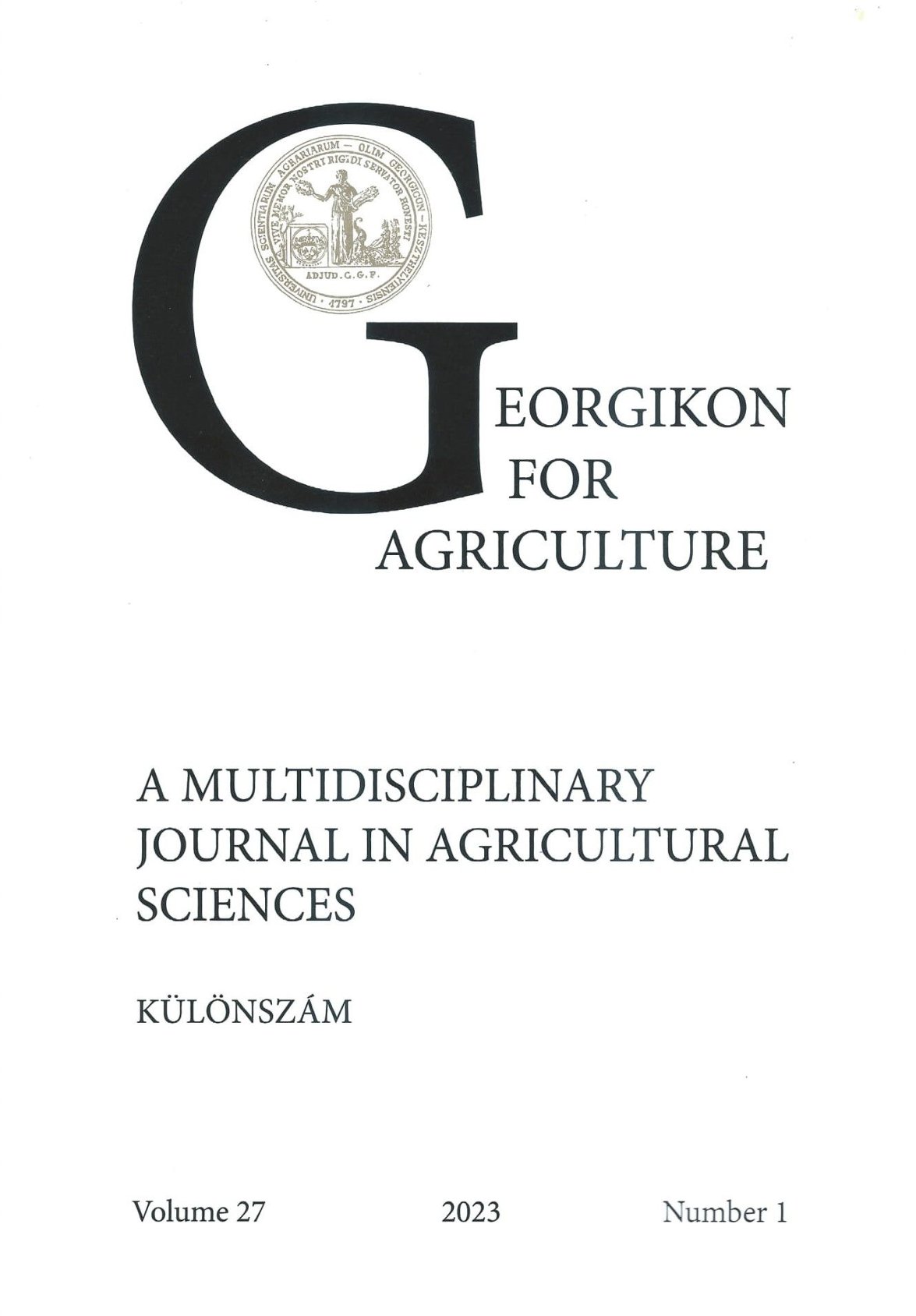Pyrinex 48 EC és Chorus 50 WG peszticidek együttes embriókárosító hatásának vizsgálata fácánembrión
Keywords:
chlorpyriphos, cyprodinil, pheasant embryo, interaction, ecotoxicologyAbstract
The aim of this study was to determine the individual and combined toxic effects of Pyrinex 48 EC insecticide (480 g/l chlorpyriphos) and Chorus 50 WG fungicide (500 g/kg cyprodinil) on the development of pheasant embryos. Emulsion and suspension of the test materials were injected in 0.1 ml volume into the air chamber of the pheasant eggs before starting the incubation. The pheasant embryos were examined on day 21 by the followings: body weight, rate of embryo mortality, rate and type of developmental anomalies by macroscopic examination. With the exception of the fungicide-treated group, the average body weight of the pheasant embryos in the treated groups was significantly lower than that of the control group. The single and simultaneous administration of the Pyrinex 48 EC increased the mortality of pheasant embryos significantly and developmental anomalies as compared to the control. There was presumably additive type toxic interaction between Pyrinex 48 EC and Chorus 50 WG. The test materials were embryotoxic in pheasant.
References
Farag, A. T., El Okazy, A. M. and El-Aswed A. F. 2003. Developmental toxicity study of chlorpyriphos in rats. Reprod. Toxicol. 17(2). 203-208.
Juhász, É., Szabó, R., Keserű, M., Fejes, S., Budai, P., Kertész, V. and Várnagy, L 2005. Early embryogenesis study on a dimethoate containing formulation and Cd-sulphate in chicken embryos. Communications in agricultural and applied biological sciences 70(4). 1075-1078.
Lehel J., Szabó R., Gajcsi D., Jakab Cs., Grúz A., Kormos É. és Budai P. 2014. A réz-szulfát és a klórpirifosz interakciós toxicitási vizsgálata csirkeembrión. Magy. Áo. Lapja 136(8). 494-500.
Tang, C., Shen, C., Zhu, K., Zhou, Y., Chuang, Y. J., He, C. and Zuo, Z. 2020. Exposure to the AhR agonist cyprodinil impacts the cardiac development and function of zebrafish larvae. Ecotoxicol. Environ. Saf. 201. DOI: https://doi.org/10.1016/j.ecoenv.2020.110808
Várnagy, L., Budai, P., Fejes, S., Susan, M., Fáncsi, T., Keserű, M. and Szabó, R. 2003. Toxicity and degradation of metolachlor (Dual Gold 960 EC) in chicken embryos. Communications in agricultural and applied biological sciences 68(4 Pt B). 807-811.
Downloads
Published
Issue
Section
License
Copyright (c) 2023 Major László, Budai Péter, Buda István, Nadhirah Binti Saidon, Lehel József, Szabó Rita

This work is licensed under a Creative Commons Attribution-NonCommercial-NoDerivatives 4.0 International License.
Cikkre a Creative Commons 4.0 standard licenc alábbi típusa vonatkozik: CC-BY-NC-ND-4.0. Ennek értelmében a mű szabadon másolható, terjeszthető, bemutatható és előadható, azonban nem használható fel kereskedelmi célokra (NC), továbbá nem módosítható és nem készíthető belőle átdolgozás, származékos mű (ND). A licenc alapján a szerző vagy a jogosult által meghatározott módon fel kell tüntetni a szerző nevét és a szerzői mű címét (BY).




